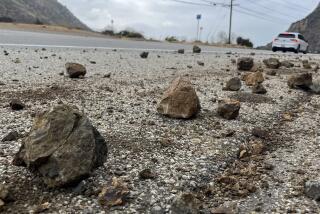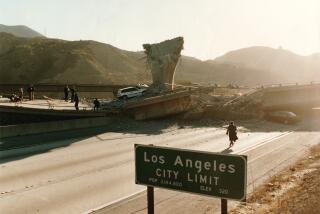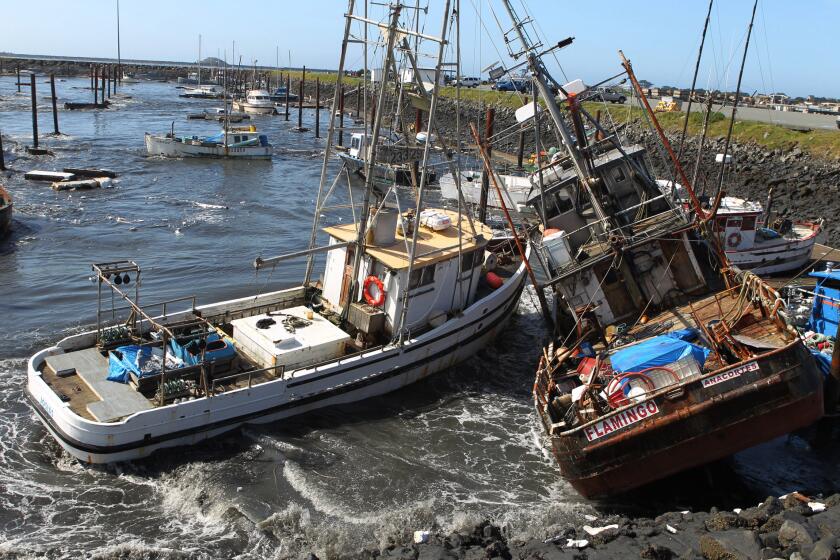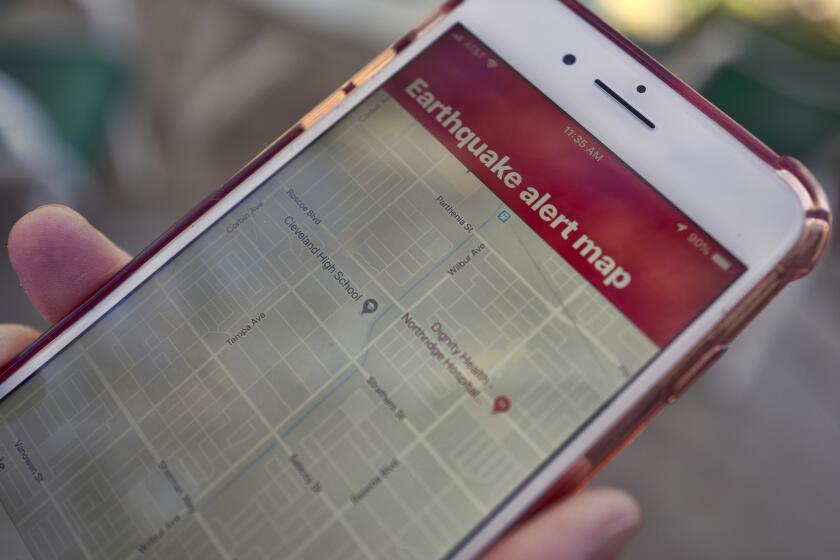Quake Projections Are on Shaky Ground, Some Say
- Share via
ALBUQUERQUE, N.M. — Iben Browning holds dozens of patents in several specialties, but it’s his earthquake projections that are stirring up notoriety he says he’d rather do without.
Browning said at a conference in Missouri last year there was a high probability of an earthquake along the New Madrid Fault this Dec. 2.
He was deluged by calls.
He insists that he did not predict an earthquake.
“The public always wants everything in black and white,” Browning said.
“No one can tell you there is going to be an earthquake on Dec. 2, no one can know that. . . . Everybody knows when he drives a car that he’s taking a risk that it will malfunction or crash. Yet people do drive cars. They’re dealing in probabilities.”
Browning, 72, a large man with a graying burr haircut, says the public does not understand--and the press does not know how to communicate--the idea of probability.
“The closest you can translate probability into English is ‘maybe.’ But unless you say ‘maybe not,’ they take it as an absolute,” he said.
Browning, who publishes the Browning Newsletter on world climate, said his climatological observations are based on high tidal forces produced by four causes: the proximity of the moon to Earth; the proximity of Earth to the sun; the alignment of the Earth, moon and sun during the full moon and new moon; and the more perfect alignment of those bodies during eclipses. These factors combine to produce tidal forces.
The same forces can trigger earthquakes, he said, and on Dec. 2, there will be the highest combination of such factors in 60 years from 30 degrees to 60 degrees north latitude. That area includes the New Madrid Fault, running roughly from Marked Tree, Ark., through New Madrid, Mo., to Cairo, Ill.
Since last year, when Browning raised the possibility of a December New Madrid quake, the Arkansas National Guard has scheduled earthquake exercises for around that time, one Arkansas school district is considering canceling classes and sales of earthquake insurance have picked up.
But Browning said whether a given fault is actually triggered would depend on the pressure built up along it. That information should come from area seismologists, he said firmly.
If no earthquake occurs in or around December, Browning said people will be more inclined to ignore the danger of the New Madrid Fault.
“That’s what I fear more than anything else,” he said. “People don’t trust authorities anymore; they never did trust them much. Why should they? What have authorities done for them except tax them to death?”
Browning’s earthquake projections are controversial among seismologists.
Klaus Jacob, senior research scientist at Lamont-Doherty Geological Observatory of Columbia University in Palisades, N.Y., said correlating earthquakes to tidal forces doesn’t work.
“It’s more likely that in the next 10 years or 20 years we’ll have something (quake activity), rather than on this particular day,” Jacob said. “You see, earthquakes don’t care about predictions. And people shouldn’t worry about predictions. They should worry about earthquakes.”
Browning said he told a convention of chief executive officers in San Francisco on Oct. 10, 1989, that there was a 50-50 chance of an earthquake registering 7 on the Richter scale on or about Oct. 16 because a high triggering force was expected that date and geologists had determined there was a strain on the San Andreas Fault.
An earthquake registering 7.1 hit Oct. 17, killing 67 people.
Jacob said: “He was just lucky. That’s the law of large numbers.”
Arch Johnston, director of the Center for Earthquake Research and Information at Memphis State University in Tennessee, said Browning “is certainly not justified scientifically.”
“The tidal force that Dr. Browning bases his theory on has been examined thoroughly by seismologists, and there’s no evidence that tidal forces can trigger earthquakes. . . . Earthquakes depend on the internal processes of the Earth, not the external processes of the sun and moon.”
Browning is chief scientist for Summa Medical Corp., an Albuquerque biotechnology research and development company. His Summa resume says he holds 66 U.S. and foreign patents in optics, electronics, mechanics, chemistry, electrooptics, hydraulics and educational toys.
Summa credits him--he won’t discuss what he does for the company--with developing new technology for compressing electronically transmitted human speech.
Over the years, he has been a development physicist with American Optical Co., worked in optics for Bell Aircraft Corp. and was a scientist for Sandia National Laboratories.
But gradually his interest in climatology grew. He said he has been accepted commercially as a climatologist since 1974 when he became a consultant for Paine Webber Inc.
His formal training was elsewhere: a bachelor’s degree in math and physics from Southwest Texas State University, and a master’s degree in bacteriology physiology and a doctorate in physiology, genetics and bacteriology from the University of Texas at Austin.
“It turned out that in my observations of climate that all of the soft tools with which I approached biology were applicable to climate,” he said. “It’s a subject that is comparable in complexity to biology.”
Business needs climate information because the weather determines how much food will be produced and where, whether the transportation industry can get over the roads, whether anything can be built, he said.
He provided forecasts for the 1989 edition of the Rocky Mountain Almanac and “did as well or better than the Old Farmers’ Almanac predictions,” said Lee Olson, almanac editor.
“He did predict the usual monsoons that come up in Arizona in late August, that the Colorado Great Plains would receive extra moisture and store up adequate moisture for the 1990 year,” Olson said. “He had the ski season only partly. He had it right for an early start, but it got dry around Christmas as I recall and his timing was a little off on that.”
More to Read
Sign up for Essential California
The most important California stories and recommendations in your inbox every morning.
You may occasionally receive promotional content from the Los Angeles Times.










